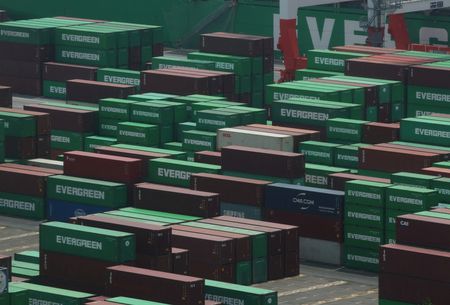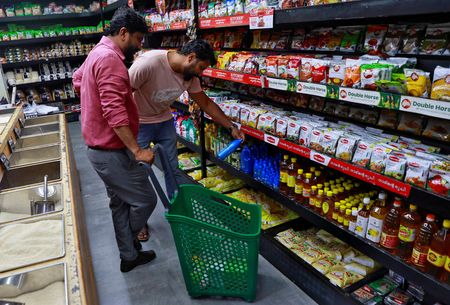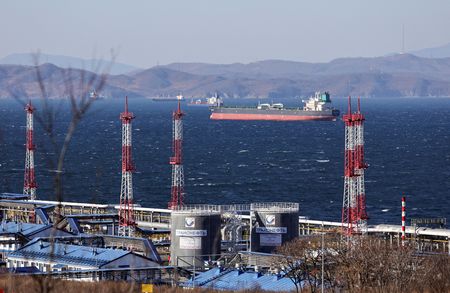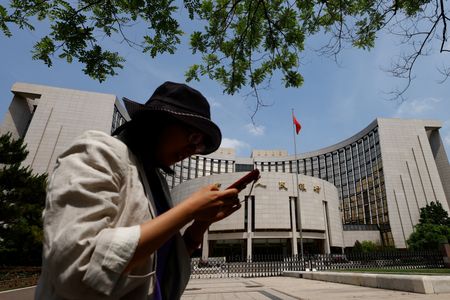By Makiko Yamazaki
TOKYO (Reuters) -Japan’s exports posted the biggest monthly drop in about four years in July, government data showed on Wednesday, as the impact of U.S. tariffs intensified, raising concerns about the outlook for the export-reliant economy.
Total exports from the world’s fourth-largest economy dropped 2.6% year-on-year in July in value terms, the biggest monthly drop since February 2021, when exports fell 4.5%.
It was larger than a median market forecast for a 2.1% decrease and marks a third straight month of decline after a 0.5% drop in June.
Despite the plunge in the value of exports, shipment volumes have so far held up as Japanese exporters have avoided major price hikes, said Takeshi Minami, chief economist at Norinchukin Research Institute.
“But they would eventually have to pass on costs to U.S. consumers and that would further hamper sales in the coming months,” he said.
Exports to the United States in July fell 10.1% from a year earlier, with automobiles slumping 28.4% and automotive components down 17.4%.
However, automobile exports fell just 3.2% in volume terms, suggesting Japanese automakers’ price cuts and efforts to absorb additional tariffs have partly shielded shipments.
The United States imposed 25% tariffs on automobiles and auto parts in April and threatened 25% levies on most of Japan’s other goods. It later struck a trade deal on July 23 that lowered tariffs to 15% in exchange for a U.S.-bound $550 billion Japanese investment package.
The agreed tariff rate on automobiles, Japan’s largest export sector, is still far higher than the original 2.5%, exerting pressure on major automakers and parts suppliers.
Exports to other regions were also weak. Those to China were down 3.5%, the data showed.
Total imports in July dropped 7.5% from a year earlier, compared with market forecasts for a 10.4% fall.
As a result, Japan ran a deficit of 117.5 billion yen ($795.4 million) in July, compared with a forecast of a 196.2 billion yen surplus.
The outcome follows unexpectedly strong growth in gross domestic product (GDP) in the April-June quarter, separate data showed last week, fuelled by surprisingly resilient exports and capital expenditure.
Economists said the strong exports growth in GDP data reflected differences in how the impact of price changes is factored in.
Nevertheless, Norinchukin’s Minami said that the Japanese economy has so far avoided the worst.
“As the tariff deal has at least reduced uncertainties, the Bank of Japan is likely to resume rate hikes as early as in October,” he said.
($1 = 147.7200 yen)
(Reporting by Makiko Yamazaki; Editing by Jacqueline Wong and Sam Holmes)











